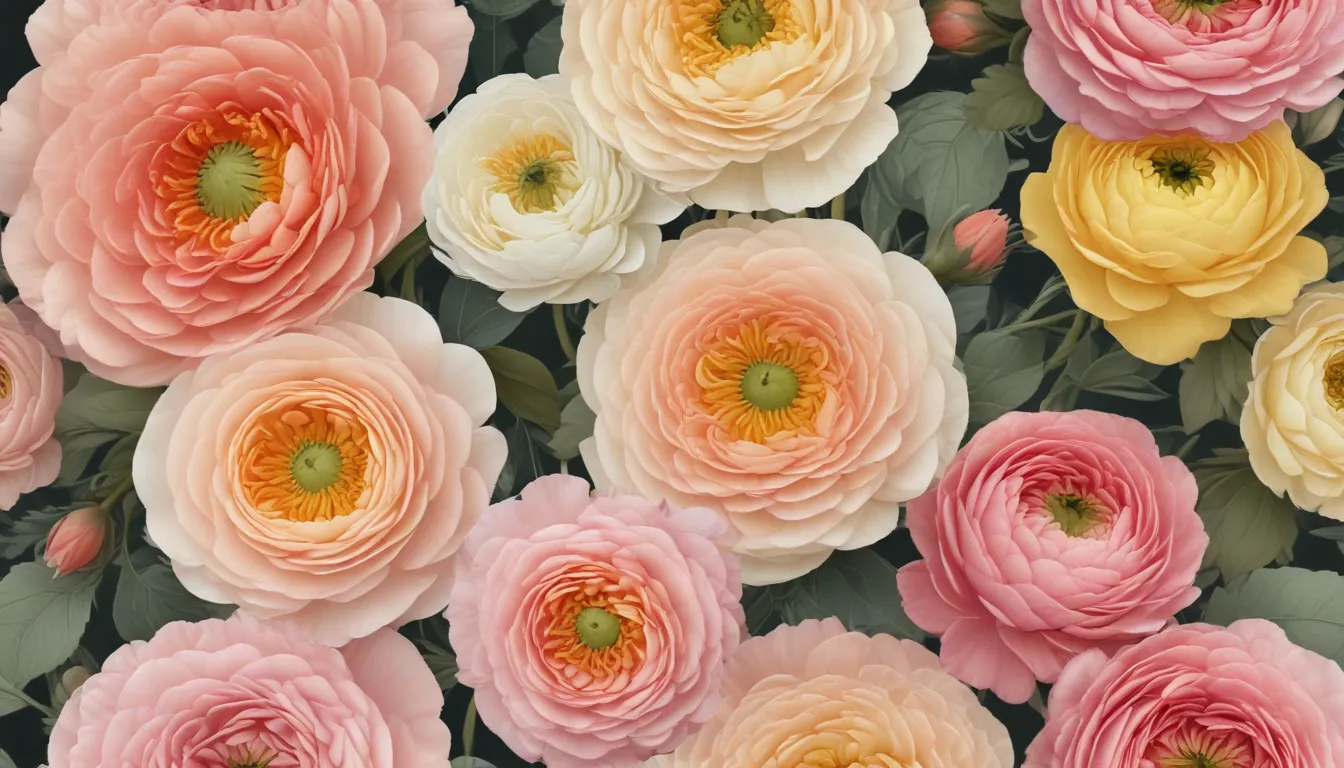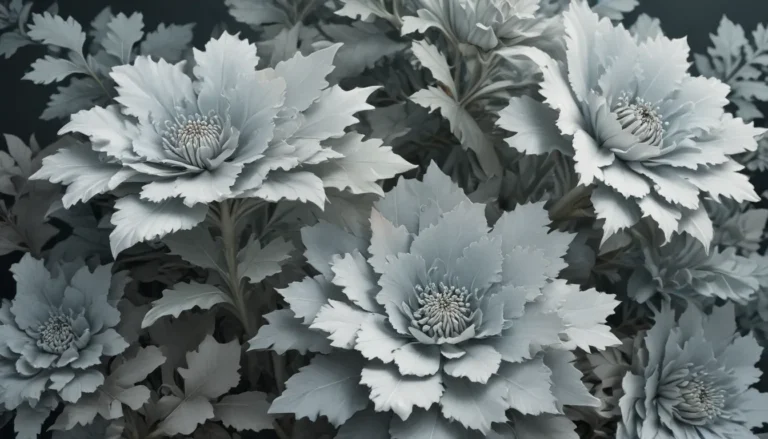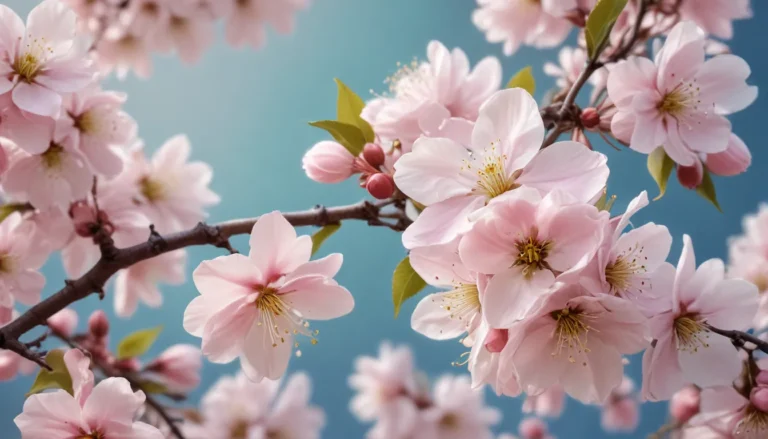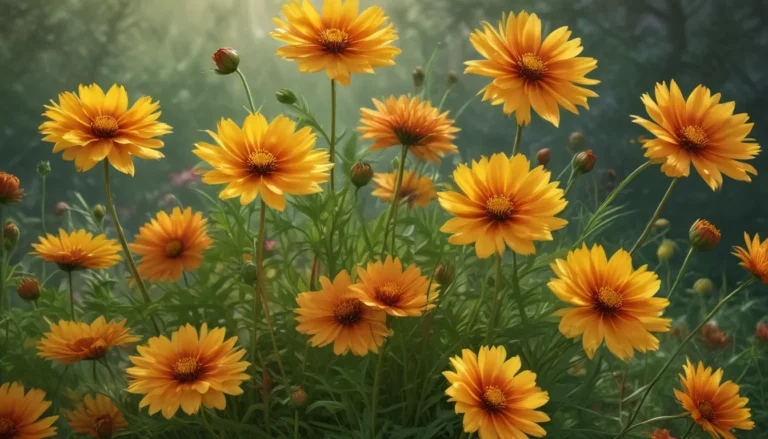The pictures we use in our articles might not show exactly what the words say. We choose these pictures to make you interested in reading more. The pictures work together with the words but don’t take their place. The words still tell you the important facts.
Ranunculus Asiaticus, commonly referred to as the Persian Buttercup, is a mesmerizing flower species that has captured the hearts of gardeners, florists, and flower enthusiasts worldwide. With its vibrant colors, intricate petals, and rich symbolism, this extraordinary plant continues to captivate and inspire those who encounter it. In this article, we will delve into 18 extraordinary facts about Ranunculus Asiaticus that will deepen your appreciation for this remarkable flower. From its historic roots and cultural significance to its growing habits and care requirements, we will explore the wonders of the Persian Buttercup. So, let's embark on this exciting journey and uncover the magic of Ranunculus Asiaticus!
Blooming Beauty of Ranunculus Asiaticus
Ranunculus Asiaticus is renowned for its show-stopping blooms that come in a delightful array of vibrant hues such as red, orange, yellow, pink, and white. These exquisite flowers feature multiple layers of delicate petals, creating a visually striking display that adds elegance to any garden or floral arrangement.
Gardener’s Delight
Garden enthusiasts adore Ranunculus Asiaticus for its resilience in various climates and soil types. This perennial plant thrives in well-draining soil and thrives under the full sun. Whether planted in a flower bed, container garden, or a spacious backyard, Ranunculus Asiaticus is a versatile choice that brings a burst of color to any outdoor space.
Floral Symbol of Charm and Attraction
Ranunculus Asiaticus symbolizes charm, attractiveness, and radiance. These captivating flowers are often used in bridal bouquets, wedding decorations, and floral arrangements to convey messages of love and beauty. Their enchanting appearance and symbolic meanings make them a popular choice for special occasions and celebrations.
Seasonal Delight
Known for blooming during the spring season, Ranunculus Asiaticus brings a burst of color and joy after the long winter months. The vibrant blooms serve as a cheerful reminder of the changing seasons and the beauty of nature's cycle, making it a favorite among gardeners and flower enthusiasts.
Origins of Ranunculus Asiaticus
Native to the Mediterranean region and parts of Asia, Ranunculus Asiaticus has roots in countries such as Turkey, Iran, and Iraq. Over time, this flower has gained popularity and can now be found in gardens and nurseries worldwide, spreading its beauty across continents.
Kaleidoscope of Colors
Ranunculus Asiaticus offers a breathtaking array of colors, from bold and vibrant to soft and pastel shades. Whether you prefer the fiery intensity of red and orange or the delicate elegance of pink and white, there is a Ranunculus Asiaticus bloom to suit every personal preference and garden theme.
The Marvel of Ranunculus Asiaticus Tubers
Ranunculus Asiaticus grows from tubers, which are fleshy underground stems that store nutrients and water. These robust tubers allow the plant to survive harsh conditions and bloom year after year, creating a captivating floral display that enchants with its vibrant colors.
A Symbol of New Beginnings
Blooming in the spring, Ranunculus Asiaticus symbolizes new beginnings and the promise of warmer days ahead. As the winter frost fades away, these flowers emerge as a symbol of hope and renewal, adding beauty to gardens and floral arrangements.
Thriving Types and Varieties
Ranunculus Asiaticus boasts a wide array of cultivars and varieties, each with its distinct charm and characteristics. Whether it's the 'Bloomingdale Series' with its large, double flowers or the elegant 'Picotee' with delicate picotee-edged petals, there is a Ranunculus Asiaticus variety suited for every taste and design preference.
An Abundance of Texture
The lush and plentiful petals of Ranunculus Asiaticus offer a delightful tactile experience, feeling velvety soft to the touch. Whether arranged in a bouquet or observed in the garden, the texture of Ranunculus Asiaticus blooms entices and charms all who encounter them.
A Symbol of Love and Romance
Long associated with love and romance, Ranunculus Asiaticus symbolizes passion, affection, and beauty. It is a popular choice for couples celebrating anniversaries, weddings, or other special occasions, allowing them to express their heartfelt emotions through the beauty of this flower.
Decorative and Versatile
The captivating beauty of Ranunculus Asiaticus makes it a versatile flower for various decorative purposes. Whether used in bridal bouquets, centerpieces, or as a standalone floral arrangement, these stunning blooms instantly elevate the visual appeal of any space, allowing for endless creative possibilities in floral design.
A Garden Treasure to Cherish
Gardeners cherish the presence of Ranunculus Asiaticus in their gardens for its exceptional beauty, ease of cultivation, and ability to brighten any outdoor space. Adding Ranunculus Asiaticus to your garden will provide years of delight and admiration for nature's exquisite masterpiece.
Conclusion
Ranunculus Asiaticus, the Persian Buttercup, holds a special place in the hearts of gardeners and flower enthusiasts worldwide. Its breathtaking beauty, vibrant colors, and unique characteristics continue to captivate and inspire. Whether gracing gardens, bouquets, or works of art, Ranunculus Asiaticus remains a timeless symbol of charm, beauty, and natural elegance.
FAQs
- How long do Ranunculus Asiaticus flowers bloom?
-
Typically, Ranunculus Asiaticus flowers bloom for 6 to 8 weeks, depending on growing conditions and proper care.
-
Can Ranunculus Asiaticus tolerate cold weather?
-
Ranunculus Asiaticus is a cold-hardy plant that can tolerate temperatures as low as 20°F (-6°C). It is advisable to protect the plants from frost during extreme winter conditions.
-
How often should I water Ranunculus Asiaticus?
-
Ranunculus Asiaticus prefers moist soil but should not be overwatered. Water the plants thoroughly once a week, allowing the soil to dry slightly between waterings.
-
Can I grow Ranunculus Asiaticus indoors?
-
Yes, Ranunculus Asiaticus can be grown indoors in containers. Ensure they receive sufficient sunlight and well-draining soil for optimum growth.
-
Are Ranunculus Asiaticus flowers edible?
-
Yes, Ranunculus Asiaticus flowers are edible. However, verify the edibility and source of the flowers before consumption.
-
How do I propagate Ranunculus Asiaticus?
- Ranunculus Asiaticus can be propagated by dividing the tubers in autumn or early spring. Separate the tuber clusters and plant them in well-prepared soil for successful growth.
In conclusion, Ranunculus Asiaticus is a fascinating and beautiful plant with a rich history and a variety of interesting characteristics. Whether you are a plant enthusiast or simply appreciate the beauty of flowers, exploring the extraordinary facts about Ranunculus Asiaticus can deepen your appreciation for this stunning species. From its ability to change colors to its therapeutic properties, this flower continues to amaze and intrigue people around the world. Take a moment to admire the beauty of Ranunculus Asiaticus and appreciate the remarkable features that make it truly extraordinary.






